Eight key points in road greening planting design
Road greening can not only provide shade, reduce temperature and noise, but also serve as the facade and logo of a city. If the road greening plants have rich species and seasonal changes, the landscape will be different in each season, which will also bring different dynamic effects. Today, let's learn about the eight key points of road greening planting with the editor of Red Maple Seedlings~
Main road greening
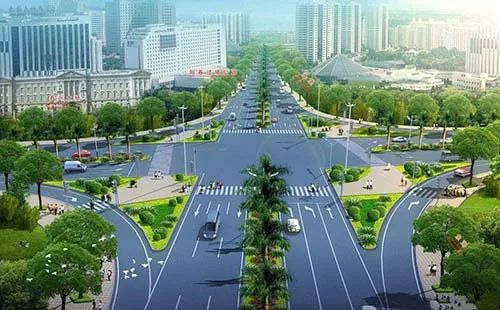
The main roads in residential areas have the functions of pedestrian and vehicle traffic. The space and scale of their roads and green belts are very similar to those of ordinary streets in the city. The layout of green belts can adopt the greening layout form of general urban roads.
The planting of street trees should consider the shade of pedestrians and the safety of vehicle traffic. A safe sight distance should be left at intersections and turns. Street trees should consider the shade of pedestrians and not hinder vehicle traffic. Trees and shrubs can be planted in multiple rows or clusters between roads and residential buildings to prevent dust and block noise; at bus stops, the requirements of passengers waiting for the bus should be considered.
Greening of secondary roads

Secondary trunk roads (community level) are roads connecting the main roads of residential areas and the residential clusters within the community. They are the link for organizing and connecting the various green spaces in the community, and have a great impact on the greening appearance of the residential community. Although the number of vehicles traveling on 6m-7m wide roads is less than that on main roads, traffic requirements must still be considered when arranging greening.
When the distance between the road and residential buildings is close, attention should be paid to dust and noise isolation. Secondary trunk roads should also meet the traffic requirements of vehicles such as ambulances, fire fighting, cargo transportation, garbage removal and furniture handling. When the lane is a dead-end road, greening must be combined with the turnaround area to make the activity space natural and beautiful.
Green belt design
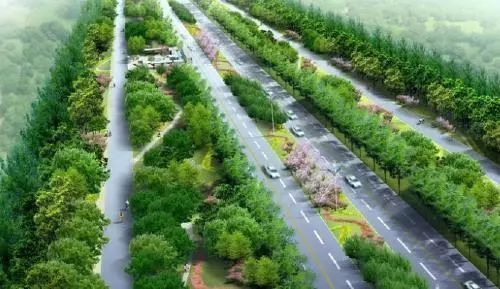
The plant configuration of the green belt should be simple in form, with neat tree shapes and consistent arrangement; the distance from the center of the tree trunk to the outer side of the motor vehicle road curb should not be less than 0.75m;
The central dividing green belt should block the glare of oncoming vehicles. Within the range of 0.6 to 1.5 m above the adjacent motor vehicle road surface, the crown of the plants should be densely foliaged all year round, and the spacing between plants should not be greater than 5 times the crown width. The width of the two side dividing green belts is greater than or equal to 1.5 m, and should be mainly planted with trees, and should be combined with trees, shrubs, and ground cover plants. The crowns of the trees on both sides should not overlap above the motor vehicles.
For dividing green belts with a width of less than 1.5 m, shrubs should be planted as the main vegetation, and shrubs and ground cover plants should be combined; for dividing green belts that are interrupted by crosswalks or road entrances and exits, the ends should be configured in a transparent manner (that is, the trees arranged on the green land should be within a range of 0.9 to 3.0 m above the adjacent motor vehicle road surface, and their crowns should not block the driver's line of sight).
Greening of residential roads
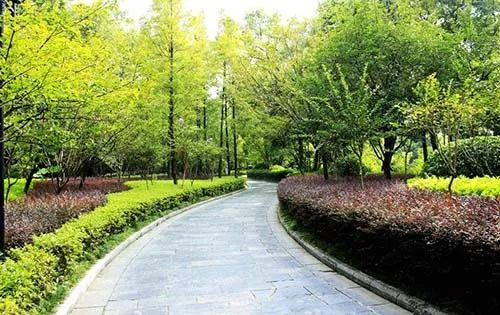
Residential paths are roads connecting households or residential units, with a width of 3m-4m, mainly for pedestrians. Greenery should be appropriately set back so that emergency vehicles and transport vehicles can approach the residence when necessary; sometimes the paths can be appropriately widened at intersections and combined with rest areas;
The paths between houses should be more curved than straight and narrow rather than wide, while meeting their functions. Roadside tree planting can also be combined with the layout of green spaces near houses and public green spaces to form an interconnected whole.
Street tree green belt design
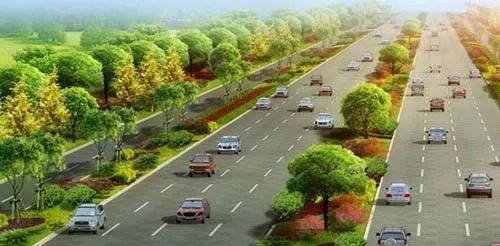
The planting of street tree green belts should be dominated by street trees, and should be combined with trees, shrubs and ground cover plants to form a continuous green belt. In sections with many pedestrians, when street tree green belts cannot be planted continuously, breathable pavement should be used between street trees, and tree pits should be covered with tree pit gratings. The planting spacing of street trees should be based on the crown of the tree species in its prime, and the minimum planting spacing should be 4m; the minimum distance from the center of the street tree trunk to the outside of the curb should be 0.75m; the breast diameter of the planted street tree seedlings should not be less than 5cm for fast-growing trees and not less than 8cm for slow-growing trees. Within the sight triangle of road intersections, street tree green belts should adopt a transparent configuration.
Tree species and ground cover selection
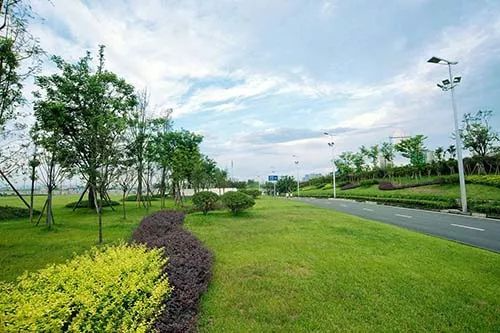
Road greening should select plant species that are adapted to road environmental conditions, have stable growth, high ornamental value and good environmental benefits; in cities in cold and snowy areas, deciduous species should be selected for tree planting in traffic green belts and street tree green belts; street trees should be selected with deep roots, high branching points, large crowns and dense shade, strong growth, adapted to urban road environmental conditions, and whose fallen fruits will not cause harm to pedestrians; flowering shrubs should be selected with lush flowers and leaves, long flowering period, strong growth and easy management.
Hedge plants and foliage shrubs should be selected from species with strong sprouting ability, dense branches and leaves, and tolerance to pruning. Ground cover plants should be woody or herbaceous foliage and flowering plants with dense stems and leaves, strong growth, few diseases and insect pests, and easy management. Lawn ground cover plants should be selected from species with strong sprouting ability, high coverage rate, tolerance to pruning, and long green period.
Parking lot greening design
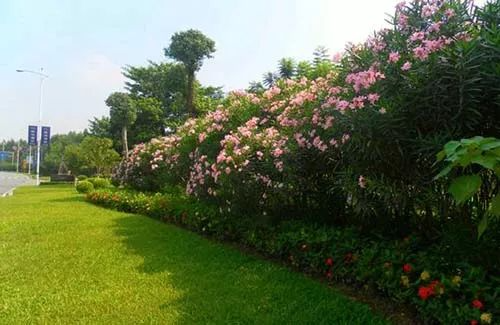
Tall shade trees should be planted around the parking lot, and isolation and protection green belts should be planted; tall shade trees should be planted in the parking lot in combination with the parking interval strip; shade trees planted in the parking lot can be street trees. The height under the branches of the trees should meet the requirements of the clear height of the parking space, that is, 2.5m for small cars, 3.5m for medium-sized cars, and 4.5m for trucks.
Road greening and overhead lines

It is not advisable to install overhead lines above dividing green belts and roadside tree green belts; if they must be installed, there should be at least 9m of tree growth space under the overhead lines; trees installed under the overhead lines should be open-crowned or pruning-resistant species; the minimum vertical distance between trees and overhead power line conductors should comply with relevant regulations.
This article was originally published by "Red Maple Seedlings".